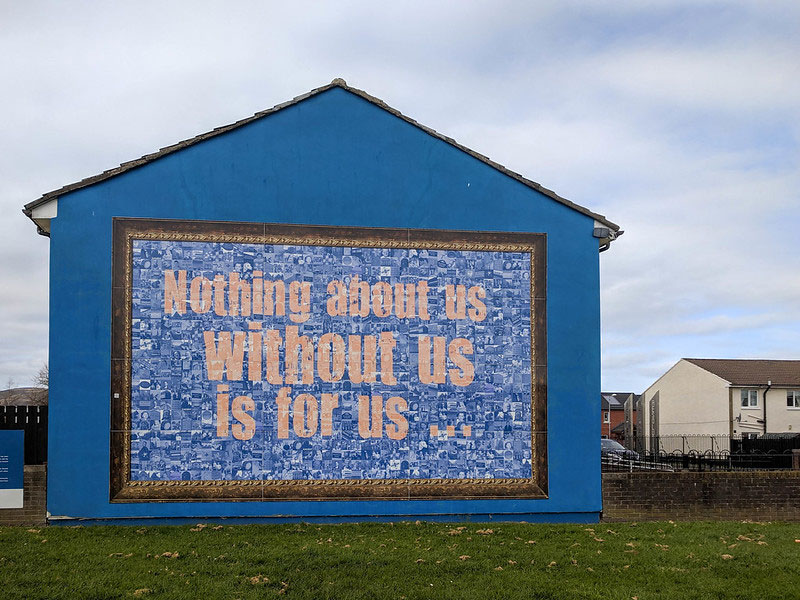
Good governance and effective, efficient management are never more important than when facing a sudden or impending period of instability. As we head into a transition of the presidency, we will doubtlessly see substantive changes to our operating environments.
This should not be too hard of an imaginative stretch for those organizations that made their ways with difficulty through the Great Recession. Some, like many arts organizations, experienced a perfect storm of disastrous factors as their audiences and donors became relatively scarce over an extended period. For others, this happened immediately after they had made a large capital commitment, creating the sense of plummeting into a hole they had dug and whose bottom they could not touch. We saw boards fracturing around whether or not their beloved endeavor was salvageable. In these cases, no one need bear much blame. The Great Recession’s brutal precipice came abruptly with no time to prepare, and the recovery took far longer than expected.
We are looking at a different set of circumstances today, but one no less abrupt given the victory that surprised almost everyone We have a president-elect who has vowed to dismantle or substantively change a number of social programs leaving the nonprofit sector little time or details with which to prepare. Among other things, in his first 100 days he has promised to cut off funding to “sanctuary cities,” cancel support for climate-change prevention programs, and attempt to implement tax cuts that may, in the end, result in devastating cuts to government spending for social welfare programs. Some of these changes will likely alter or stop funding flows and the policy frameworks within which we have been functioning.
Sign up for our free newsletters
Subscribe to NPQ's newsletters to have our top stories delivered directly to your inbox.
By signing up, you agree to our privacy policy and terms of use, and to receive messages from NPQ and our partners.
Boards must take these next few weeks and months to consider the what-ifs—not in a fright-filled way, but as an organizational stress test. Is this organization fit enough, self-knowledgeable enough, foresighted enough, and connected enough to make it through an obstacle course with as yet unknown threats? The only way to gauge that is to begin the self-questioning now.
- Does your board have a common understanding of the organization’s business model? Are board members able to track the critical metrics in that model by an easy to interpret dashboard? If you have been putting this off, do it now. Have your board review NPQ’s excellent webinar on the construction of dashboards and adapt these insights to fit your circumstances. At the same time, this classic article by Jeanne Bell describes in simple terms what pivots need to be made by the board right now in regard to financial management.
- Do you have enough liquidity? Start now to create or build out your cash reserves, open lines of credit, and restrict unnecessary spending. Pay special attention to building your unrestricted dollars, especially if you are predominantly supported by contracts. Prepare as best you can to gather cash and sufficient unrestricted capital (cash and human) to weather significant change. This article by Claire Knowlton will help your board understand different kinds of capital, including that which provides liquidity.
- Do you have strategic connections with local, state and national networks so that you are first in line for critical information and advocacy? This post-9/11 study showed the importance of this planning following a disaster.
- Do you fully understand the policies and regulations at the federal and state levels that could significantly change your operating position? Make it your business to create an advocacy capacity at the board level that allows you to move quickly with community engagement and support. Ask your state agencies what they can see as dangers in the upcoming environment.
- Meet with your private institutional and major individual donors to help them process their own planning, including your organization in that narrative.
- Look around at your partner organizations—do they need support you might be able to lend and vice versa? There is nothing like a circle of friends in a time of need and this planning exercise may make new friends for your organization.
- Have you recently reviewed your mission and “margin matrix” to make sure you know the degree to which each program contributes to your mission and to the financial margin? This examination is much easier to undertake without the agonizing specter of looming budget cuts. Here is an article to help you consider that process.
- Are you making sure the organization stays in close contact with its constituents and stakeholders so they understand what may be at stake? Again, this does not need to be alarmist, but it is a good way to ensure they are watching your back.
- Do you have a constant and open enough conversation going with executive leadership to ensure that they feel supported through what may feel like an unstable period?
- And finally, does your board support the organization taking a leadership position on issues like immigration policy, policing and criminal justice policy, and racial justice, if these mission-oriented positions become confrontational with new federal initiatives? As always, our nation depends on a brave and active civil society
Having been active in this sector for some 50 years, I vividly remember that during the Reagan administration, the agency that provided funding for many of the battered women shelters around the country was forced to close. Ninety percent of revenue at the Kansas shelter where I volunteered was cut with only a few months notice. In deciding whether or not to keep the shelter open, the board fought and eventually split, and a number of members left. The rest of us went to our base of volunteers and concerned women who had stayed with us and developed a strategy that depended entirely upon them making our case. As a board member, I was a part of ensuring the survival of the group and the women it served, and without the board’s commitment and risk-taking, that turnaround never would have occurred. Your board likely has a chance to make a significant difference right now with just a bit of foresight and care and the right questions asked.
In this instance of anticipating unpredictable but imminent change, boards have some time to prepare to be more nimble and engaging of community, which is your core asset, while still observing the proper board/staff distinction. We have presented some ideas about how to change the board’s game in anticipation of a period of turbulence, but we welcome others from readers.













